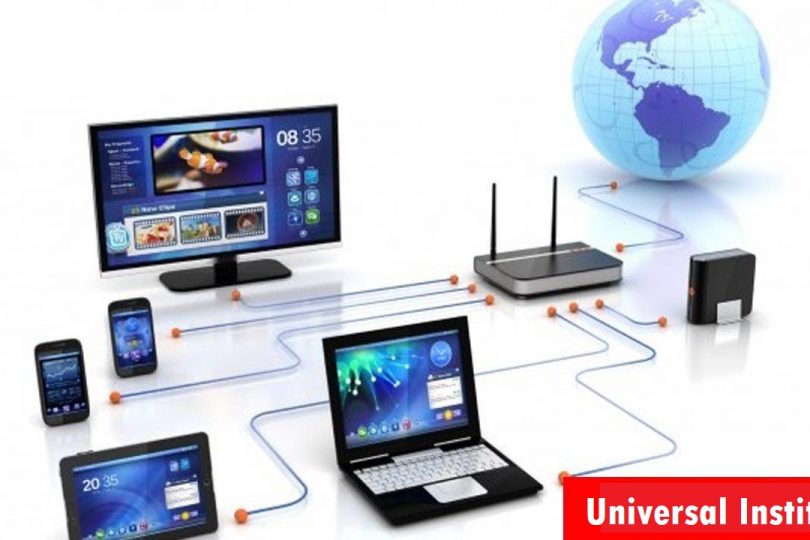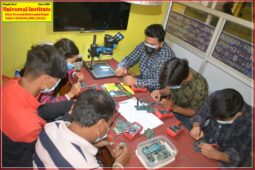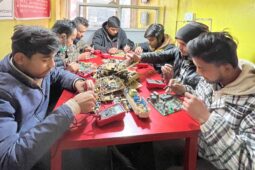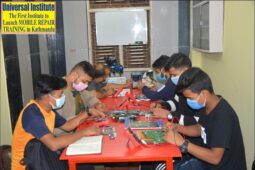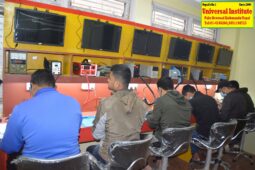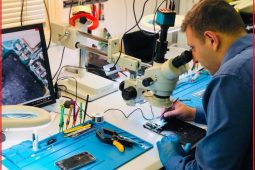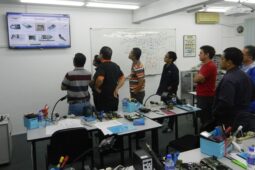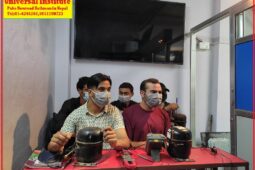Hardware & Networking Course
Networking Course Contents
Part 1.Introduction to Computer Networks: Introduction:
- Definition of a Computer Network; What is a Network?
- Components of a computer network: Use of Computer networks
- Networks for companies, Networks for people
- Social Issues: Classification of networks
- Based on transmission technology
- Based on the their scale
- Local area networks
- Metropolitan area networks
- Wide area networks
- Wireless networks
Part 2.Network Software & Network Standardization:
- Introduction: Networks Software; Protocol hierarchy
- Design issues for the layers, Merits and De-merits of Layered Architecture, Service Primitives:
- The OSI Reference Model
- The TCP/IP Reference Model
- Comparison of the OSI & the TCP/IP Reference Models: Network standardization
- Who’s who in the telecommunication world?
- Who’s who in the standards world?
- Who’s who in the Internet standards world?
Part 3. Data Communications: Introduction:
- Theoretical basis for communication, Fourier analysis, Band limited signals
- Maximum data rate of a channel: Transmission impairments; Attenuation distortion, Delay distortion
- Dispersion, Noise: Data transmission modes; Serial & Parallel, Simplex, Half duplex & full duplex,
- Synchronous & Asynchronous transmission
Part 4. Physical Layer: Introduction:
- Network topologies; Linear Bus Topology, Ring Topology, Star Topology, Hierarchical or Tree Topology, Topology Comparison, Considerations
- when choosing a Topology: Switching; Circuit switching, Message switching, Packet switching, Implementation of packet switching, Relationship between Packet Size and Transmission time, Comparison of switching techniques: Multiplexing; FDM – Frequency division multiplexing, WDM – Wavelength division multiplexing, TDM – Time division multiplexing:
Part 5. Transmission Medium: Introduction:
- Transmission medium; Guided & Unguided Transmission medium, Twisted pair, Coaxial cable, Optical fiber, Comparison of fiber optics and copper wire: Wireless transmission; Electromagnetic spectrum, Radio transmission, Microwave transmission:
Part 6. Data Link Layer: Introduction;
- Goal of DLL: Design issues of DLL; Services provided to the Network layer, Framing, Error control, Flow control, Link Management, 2.ARQ strategies: Error Detection and correction; Parity bits, Importance of flaming distance for error correction, Single bit error correction or (n, m) flaming code, Error Detection or Cyclic Redundant Code (CRC): Data Link layer protocols; Transmission control protocols, HDLC:
Part 7. Medium Access Control Sub Layer: Introduction:
- 1.The channel allocation problem; Static channels allocation, Dynamic channels allocation in LAN’s & MAN’s:
- 2. Multiple access protocols; Pure ALOHA or Unslotted ALOHA Protocol, Slotted ALOHA or Impure ALOHA Protocol, CSMA Protocol, CSMA/CD Protocol, Binary exponential Algorithm,
- 3. Comparison of channel access protocols: IEEE standards; Ethernets, Fast Ethernet, Gigabit Ethernet, IEEE 802.3 frame format:
Part 8. Network Layer: Introduction:
- Design issues of Network layer; Nature of the service provided, Internal organization, Routing, Congestion control, Internetworking: Principles of
- Routing; Types of routing algorithms, Classes of routing algorithms, Properties of routing algorithms, Optimality principle: Routing algorithms; Shortest path algorithm, Flooding, Distance vector routing, Hierarchical routing, Link state routing, 3.Comparison of routing algorithms: Congestion; Factors of congestion, Comparison of flow control and congestion control, General principles of congestion control, Closed loop solution: IP protocol (IPV4):
Part 9. Transport Layer: Introduction:
- Services of Transport layer; Service primitives: Connection establishment:
- Connection Release: Transport Protocols; TCP protocol, UDP protocol:
Part 10. Networking Devices: Introduction;
- Goal of networking devices: Repeaters; Uses of Repeaters: Hubs; Classification of Hubs, Stackable Hubs, USB Hub: Switches; Switching Methods, Comparison of switching methods,
- Working with Hubs and Switches, Cables Connecting Hubs and Switches, Managed Hubs and Switches, Port Density: Bridges; Bridge Implementation Considerations,
- Types of Bridges: Routers; Dedicated Hardware versus Server Based Routers, Advantages and Disadvantages of dedicated hardware routers, Drawbacks of Routers: Gateways; Advantages of gateways, Gateways Functionality: Other Devices; Modems, Proxy Server, Wireless router, B router, Wireless Access Point (WAPs)
Course Duration: Regular Course-90 Days & Short Course-45 Days
Training Time: 2 Hours Per day(Theory + Practical)
Language of instruction:Nepali/Hindi/English
Eligibility Criteria: 8 to 10th Class(At Least Completed Grade 8)
Group structure: 6 Participants Per Group
New classes starts on: 1st,10th and 20th(Every Month)
